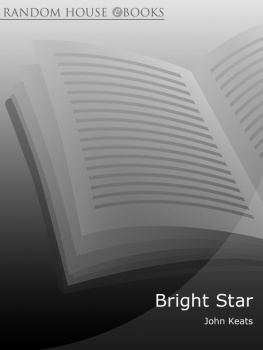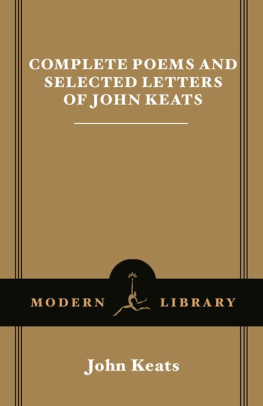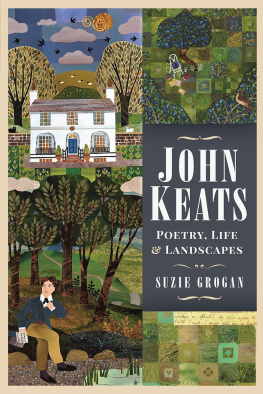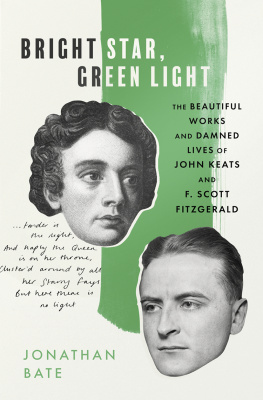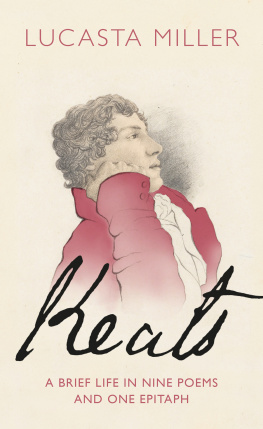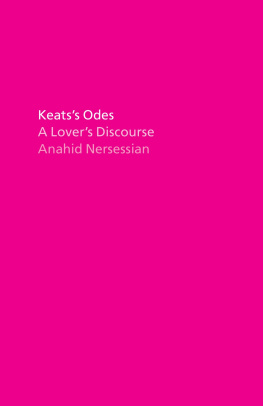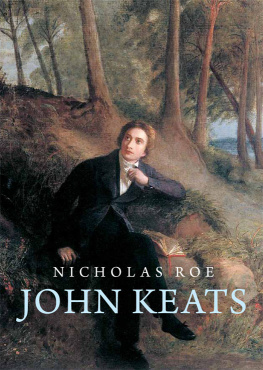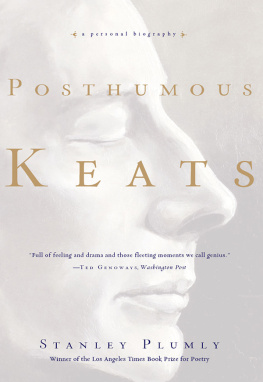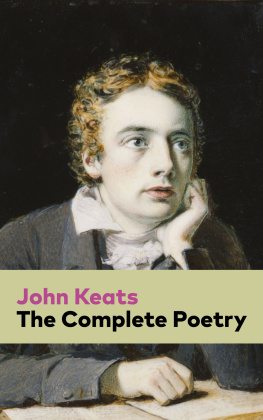C ONTENTS About the Book WITH AN INTRODUCTION BY DIRECTOR JANE CAMPION John Keats died in penury and relative obscurity in 1821, aged only 25. He is now seen as one of the greatest English poets and a genius of the Romantic age. This collection, which contains all his most memorable works and a selection of his letters, is a feast for the senses, displaying Keats gift for gorgeous imagery and sensuous language, his passionate devotion to beauty, as well as some of the most moving love poetry ever written. About the Author John Keats was born in London in 1795. He trained as a surgeon and apothecary but quickly abandoned this profession for poetry. His first volume of poetry was published in 1817, soon after he had begun an influential friendship with the Romantic poet Percy Bysshe Shelley.
His first collection and the subsequent long poem Endymion received mixed reviews, and sales were poor. In late 1818 he moved to Hampstead where he met and fell deeply in love with his neighbour Fanny Brawne. During the following year Keats wrote some of his most famous works, including The Eve of St. Agnes, Ode to a Nightingale and La Belle Dame sans Merci. He was however increasingly plagued by ill-health and financial troubles, which led him to break off his engagement to Fanny. Soon after the publication of Lamia, Isabella, The Eve of St Agnes and Other Poems in 1820, Keats left England for Italy in the hope that the climate would improve his health.
By this time he was suffering from advanced tuberculosis, and he died on 23 February 1821. On his request, Keatss tombstone reads only Here lies one whose name was writ in water . JOHN KEATS Bright Star: The Complete Poems and Selected Letters WITH AN INTRODUCTION BY Jane Campion
I NTRODUCTION My John Keats I would not have read Keatss poems if I had not been avoiding adapting a book for the screen where the protagonist was a creative writing teacher. The thought was that before proceeding with my script I should enlarge my knowledge of English poetry and literature. It was on this account that I bought a biography on Keats by Andrew Motion and set about reading it. It was a very big book and I really could not escape learning quite a bit about John Keats and his poems.
I worked studiously through the first half of the biography, amazed at Keatss insights and emerging philosophy and reading and rereading Motions analysis of his early poems. Nothing prepared me for the last third. Here Motion outlined a love affair unparalleled for its touchingly detailed and weepingly tragic proportions. Almost all evidence of the love affair came from one primary source: Keatss own letters to the girl he loved. These were no ordinary letters but the staggeringly honest outpourings from one of the youngest and greatest of the English romantic poets. I still today remember finishing the biography in the blue attic room I then used as a study.
I remember reading as the afternoon turned into evening, then night, sobbing pitifully as I came to the sorrowful end of Keatss life and his love affair. For me it is a story more romantic and sad than Romeo and Juliet for being true. She eighteen years old, unformed, frisky and quick tongued a diligent student of fashion, and he a twenty-three-year-old orphaned poet. Many things were in their favour; depth of feeling, joined hearts, steadfastness and a shared house, while much else conspired against them; Keatss lack of financial success and his bad health. The engaged Fanny and Keats were finally separated as Keats took his last chance for a cure in Rome. This last hope was unrealised and Keats, at twenty-five, died of consumption in his young friend Severns arms.
Intrigued, I bought and began to read Keatss poems and his collected letters. I drifted into wondering if I could somehow tell his story on film, only to shake myself. Nobody really reads poetry anymore, but the cruellest blow to my hope was simply that while I was reading the poems I didnt completely understand them, or, in the case of the long poems Endymion or Hyperion, I didnt know the classical references. How could I make a film about Keats if I didnt understand poetry? I didnt give up but nor did my ambitions harden. Two years later, when I took a four-year sabbatical break from film-making, I found myself daydreaming in a soft and wafty way of Keats and Fanny. I would sit in a paddock by the Colo River with a rag-tag collection of horses while I made coffee on a little burner.
The suns warmth felt like a kiss. Life slowed down: a breeze coming across the paddock arrived as an event. As I sat across a log sipping my coffee, the horses gathered around. One day a pregnant mare stayed after the others drifted off and finally with all the tenderness a hoof could afford, she carefully widened the opening of my bag and peered inside. I sat next to the mare, and started to read Keatss poems to myself. I read Ode to Psyche with its vivid description of the open poetic mind, also Ode on Indolence, where Keats championed and wrote of the dreamy drifty state I was enjoying: Ripe was the drowsy hour; The blissful cloud of summer-indolence Benumbd my eyes; my pulse grew less and less Sometimes I read a poem and felt I had taken in the meaning, only to realise I had not understood it and had in fact mistaken the meaning, and would then feel quite a fool.
Fool or not, actual meaning or not, the seduction by words, rhythm, atmosphere and intimacy had begun. I was loving that these words, sounds and drifts of meaning could be joined like daisy chains, like streams to rivers, like whispers that could in Keatss hands, describe me to myself and all the while have a sensuous and delicious presence that played on my sensations. As I read Keatss letters (who spells badly like me), I came across his theory of negative capability: an endorsement of mystery, of developing your capacity to accept mystery without irritable searching after fact and reason. I began to realise that perhaps poetry is not so much in need of understanding as loving, or being enchanted, seduced, intrigued or awed. Like eating something delicious, you dont need to know how it was made; all you need to do is enjoy it. My journey with Keats has been longer, deeper more intimate and more sustained over the last few years than my relationships with even my best friends.
I have read his life story, I have read his poems, I have read his letters amongst which are the thirty-two surviving letters and notes he wrote to his beloved Fanny Brawne. I have read her letters. I have lain around on couches and beds, at a beach house, a river house and a mountain hut, dreaming about the two and a half years of Fanny and Keatss brief but intense time together. Then I wrote the screenplay, Bright Star, based on their love affair. I know as much about those two and a half years of his life as almost anyone can. I have lent myself to imagining how things might have happened, how Keats might have first met Fanny.
By thinking about all the practical aspects of their relationship and their lives I realised it was possible that Fanny may have actually slept in what was to become Keatss bed while he and his best friend Brown were away in Scotland. Also when Fannys family moved in to share the house with Brown and Keats, Fanny and Keats may have slept only a wall apart. I have been to Keatss house, Wentworth Place in Hampstead, Ive walked the Heath and the streets of Hampstead where Keats would have walked and also several times visited the room where he died in the house (now a museum for Keats, Shelley and Byron) next to the Spanish Steps in Rome. Ive looked up at the ceiling of his deathbed and seen the painted daisies he joked about to Severn, already growing over him. I got more confident with his poems, declaring Ode to a Nightingale my favourite poem in the world. It has the best of Keatss immediacy, written in one sitting under a plum tree.
Next page
